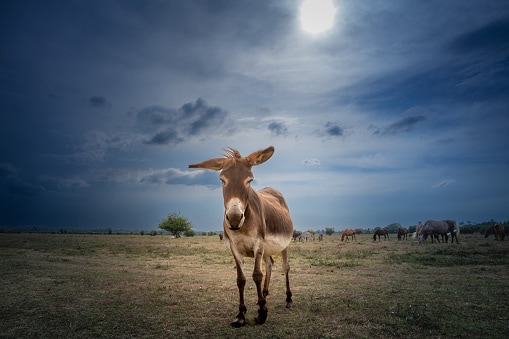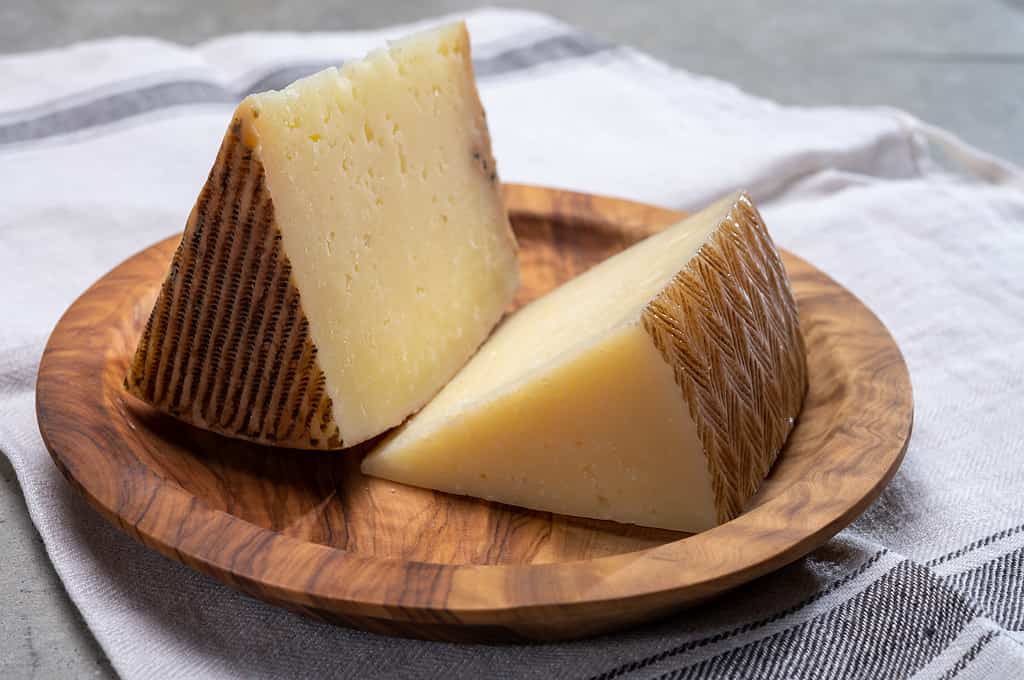There are more than 1800 different types of cheese in the world. All types of cheese fall into different categories according to the type of milk used, country or region of origin, age, texture, flavor, or preparation methods used. We are familiar with most of the cheese varieties available in stores and at restaurants near us, especially the affordable options, but do we know what the most expensive cheese in the world is, why it is so expensive, and what it tastes like?
What Is the Most Expensive Cheese in the World?
Pule cheese, or magareći sir, is a Serbian cheese that is considered one of the rarest and most expensive cheeses in the world.
It is made with the milk of the endangered Balkan donkey, an indigenous breed of the Serbian donkey. Pule cheese was introduced to the trade in September of 2012 at the annual cheese show in Frome, Somerset, England.

The domesticated Balkan donkey loves eating greens; however, it will never say no to treats such as apples, carrots, and corn.
©BalkansCat/iStock via Getty Images
How Much Does the Most Expensive Cheese in the World Cost?
At $600 per pound, Pule cheese sets the record for the most expensive cheese in the world.
Why Is It So Expensive?
The Serbian donkey Pule cheese is expensive because of its rareness. There is only one farm in the world that produces the cheese.
Pule cheese, considered a luxury food item, is not easy to come by. This is because the donkey milk needed to produce the cheese is not easy to acquire, and the milk takes a lot of time and effort to produce and collect.
Bear in mind that only a small number of donkeys are available for milking on the farm. These donkeys also produce a low volume of milk. Balkan donkeys can only produce up to one gallon of milk per day and for a period of six months only. On the other hand, most dairy cows can produce, on average, six to seven gallons of milk per day over a period of 10 months. The donkey’s udder also takes time to refill and needs to empty completely in order for the donkey to produce more milk. This makes the process take even longer.
These donkeys also have long gestation periods of 11-14.5 months, which leaves only a small amount of milk to produce the cheese. The breeding and milking of the donkeys have also become less frequent. This makes the cheese even more in short supply and expensive.
Where Does Production Take Place?
Pule cheese production happens at the Zasavica donkey reserve, the largest donkey farm in Eastern Europe. The farm is inside the Zasavica nature reserve, which is in west-central Serbia.
Zasavica, named the Special Nature Reserve Zasavica, a nature conservation area since 1997, is a protected nature reserve known for its preserved wetlands, diverse fauna and flora, and vulnerable species. Here, tourists can experience the many attractions offered by the Special Nature Reserve Zasavica Visitor’s Centre, including a visit to the farm, which is home to the Balkan donkeys, as well as the Mangalica pigs, domestic mountain horses, and Podolian cattle.
The Balkan donkeys joined the reserve in 2000, and the milking of the herd started in 2012.
The Zasavica donkey reserve uses the funds from selling the donkey cheese to fund their conservation work. The donkey reserve has about 120 donkeys. Their milk produces an assortment of goods, such as cheese, facial creams, and soaps.

There has been a recording of more than 600 plant species, 216 bird species, 20 fish species, 65 mammal species, and 27 species of amphibians and reptiles at Zasavica.
©nedomacki/iStock via Getty Images
What Is the Process of Making Pule Cheese?
The process for making Pule cheese comes from secret, traditional techniques passed down for hundreds of years. Cheesemaking starts at the Zasavica donkey reserve, where the milking takes place. Milking happens three times a day. This is because a donkey’s udder is much smaller than a cow’s udder. Therefore, it cannot store a lot of milk. It helps to keep foals, or young donkeys, within sight of the milking donkey, so it lets down milk.
Goat’s milk is added to the donkey milk, as the casein in the donkey milk is not enough in order to make the cheese. Casein is a type of protein that works as a binding agent, providing structural stability in cheese making. The mixture consists of 60% donkey milk and 40% goat’s milk. It takes 6.6 gallons of milk to make 2.2 pounds of Pule cheese. In comparison, most cheeses require only about 2.6 gallons of milk during production.
Rennet, a natural enzyme, is added to the milk mixture to coagulate it and to form the curds, which separate from the whey. Next, the curds get strained and packed into molds. These molds then get placed in a cool, humid room for three days to allow the cheese to form. Thereafter, the cheese is transferred to a maturation room and stays there for a month to age. Smoking of the cheese occurs during the production process. The Pule cheese is wrapped up and priced once the aging process is finished.
Where Can You Purchase Pule Donkey Cheese?
Pule cheese can be difficult to acquire due to it being so rare and production occurring only in small amounts. The best way of buying the cheese is directly from the farm that produces it. Some of the most expensive restaurants in the world have Pule cheese on their menu. The cheese might be available through retailers that specialize in rare and exotic cheeses. Just be sure to check the cheese’s authenticity and quality before buying it.
How to Consume and Enjoy the Donkey Cheese?
According to The Cheese Atlas, the best way to consume this distinctive cheese is fresh with a glass of local rakia, a Balkan-style white spirit similar to vodka. The cheese also balances well with black Turkish coffee.
When enjoying the cheese as a meal, make sure to include local cured meats, such as Mangalica sausage, a sausage made from a pig with one of the highest fat contents in the world, and speck. Use it as a topping on traditional dishes of the Balkan region, such as polenta or goulash. Or incorporate it fully into risotto or polenta dishes. Pule cheese is a popular ingredient in traditional Serbian cooking.
When enjoying the cheese on its own, drizzle with some olive oil and sprinkle coarse sea salt to reveal the flavors of the cheese. Make sure to enjoy it in small servings, as it is a delicacy.

Aim to use three to five cheeses with different flavors and textures for an incredible charcuterie board.
©Anna_Shepulova/iStock via Getty Images
What Does It Taste Like?
Pule cheese has unique flavors that are multifaceted. The cheese has a clean, mild, and sweet flavor, with similarities to a young Manchego, a sheep’s milk cheese that is nutty, earthy, and slightly salty. The rich, buttery flavor of the donkey milk balances the tangy, slightly sour taste of the cheese.

The rind of Manchego cheese is inedible.
©barmalini/iStock via Getty Images
What Color Is It?
Pule cheese has a white color and looks like goat’s cheese.
What Is the Texture Like?
This rindless cheese has a soft, crumbly, and dry texture, like feta cheese.
Does Pule cheese have any nutritional value?
Donkey milk has a high nutritional value and is similar in composition to human breast milk. Pule cheese is a good source of healthy fats, protein, minerals, and vitamins, such as vitamins A, B, C, and E. It also has anti-allergen properties, which means it is a good alternative for individuals suffering from cow’s milk allergies. Donkey milk is rich in lactose and very low in fat and cholesterol compared to cow’s milk. This makes Pule cheese a good choice for health-conscious individuals.
Thank you for reading! Have some feedback for us? Contact the AZ Animals editorial team.








